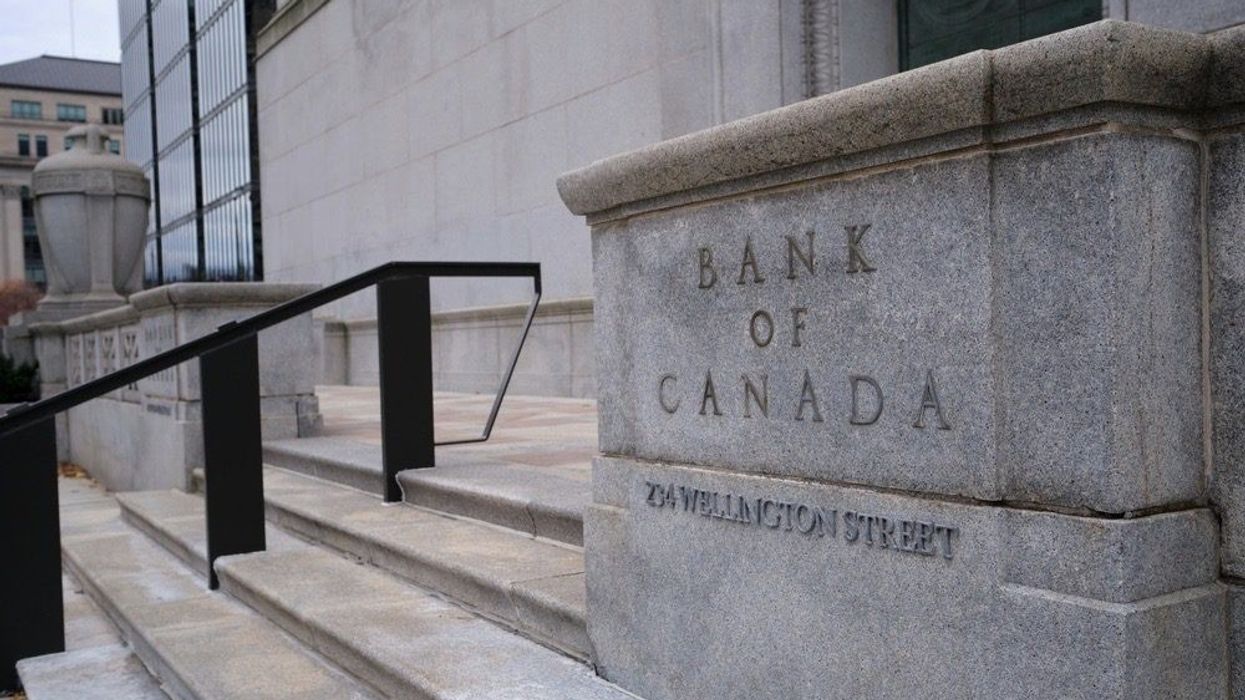As widely expected by economists, the Bank of Canada implemented another half-point interest rate increase in today’s rate policy announcement, embarking on the tightest hiking cycle seen in decades and reinforcing its commitment to tame runaway inflation growth.
The 50-basis-point hike -- the second consecutive, following the April 13 announcement -- brings the bank’s trend-setting Overnight Lending Rate to 1.5%, which will in turn filter down to the big consumer banks’ variable-rate pricing; the Prime rate is expected to rise to 3.7% following today’s news, from the current 3.2%. The BOC also stated it will continue to allow holdings to drop off its asset sheet via quantitative tightening, as a complimentary approach to tougher monetary policy.
That the bank has had to take such an aggressive, and quickly-paced, approach to rising rates is in response to the pace of inflation, which hit a fresh 31-year high of 6.8% in April.
“With the economy in excess demand, and inflation persisting well above target and expected to move higher in the near term, the Governing Council continues to judge that interest rates will need to rise further,” states the BoC’s announcement. “The policy interest rate remains the Bank’s primary monetary policy instrument, with quantitative tightening acting as a complementary tool. The pace of further increases in the policy rate will be guided by the Bank’s ongoing assessment of the economy and inflation, and the Governing Council is prepared to act more forcefully if needed to meet its commitment to achieve the 2% inflation target.”
It’s highly expected that a third half-point increase is to come on the BoC’s July 13 announcement -- bringing the OLR to a full 2% -- before slowing the pace of tightening to the usual quarter-point increments for the remainder of 2022. In order to reign inflation in to its 2% target, the BoC needs to hike its policy rate to its “neutral” range of between 2.5 and 3%, indicating there are several more rate increases to come through this year and next.
The BoC pointed to the fact that inflation was “well above” its April forecast, and anticipates it “will likely move even higher in the near term before beginning to ease.”
“Almost 70% of CPI categories now show inflation above 3%,” states the announcement. “The risk of elevated inflation becoming entrenched has risen. The Bank will use its monetary policy tools to return inflation to target and keep inflation expectations well anchored.”
“Canada Should Already Be at Neutral”
However, there is sentiment among economists that the BoC is playing a game of catch-up with rates, having allowed inflation to run too hot for too long as the economy recovered from the effects of the pandemic.
“Canada should already be at a neutral interest rate given how high the inflation rate is running and given the characteristics of the economy,” stated Derek Holt, VP and head of capital markets economics at Scotiabank, in a poll conducted by Finder. That take is echoed by Charles St-Arnaud, chief economist at Alberta Central, who commented that, “There is a need to bring the policy rate rapidly to neutral and maybe even above to lower inflation.”
According to the poll, economists were unanimous in expecting upward movement from the Bank today. The majority also predict the OLR will raise three more times this year (four including today’s hike), with 78% expecting an increase in July, and 61% anticipating a September hike.
The Impact on Borrowers
As the cost of borrowing soars, Canadian consumers have been increasingly squeezed by higher debt servicing costs as well as higher prices for everything from groceries to gas. That’s leading to changes in consumer spending and borrowing behaviour; a CIBC survey finds 36% of existing homeowners with variable mortgages say they’re likely to switch to a fixed option within the next 12 months as a result of rising interest rates.
READ: Homeowners with HELOCs Most Likely to Feel Heat of Rising Rates
But the impacts of higher rates extend beyond existing mortgage holders; another 63% of those who rent or are living with family say they’re concerned about the impact rising rates will have on their ability to purchase a home in the future.
As bond yields have risen steadily, so too has the fixed cost of borrowing, bringing the best five-year fixed rates from the big banks to a range of 4.5%. That means mortgage applicants are currently being stress tested at an amplified range of 6.5%.
Slowing buyer activity has already started to be felt in the housing market; following the BoC’s first quarter-point increase in March, home sales in the Greater Toronto Area tumbled by 41% annually -- enough to lead to price declines in surrounding suburban markets, which had experienced considerable froth over the course of the pandemic.
According to the Finder poll, a quarter of economists believe a housing market correction (defined as prices softening 20% or more) is already underway.
However, Leah Zlatkin, mortgage expert at LowestRates.ca, reminds that today's OLR of 1.5% remains below pre-pandemic levels of 1.75%.
“Canadian homeowners and hopeful buyers are readjusting their monthly budgets and affordability expectations after each of these increases,” she says. “While this change may be difficult to manage alongside other increased costs of living right now, it’s important to remember that before the pandemic the overnight rate was at 1.75 per cent and we’re not yet back at that level.”
According to her calculations, a homebuyer paying the national average price for a home at $746,000 would see a monthly increase of $160 on their variable mortgage payment to $2,985, based on a rate of 2.7%, compared to 2.2%.
A Toronto borrower with a considerably higher average price of $1,2500,000, would see a monthly increase of $250 per month to $4,580, while a Vancouver borrower would shell out $5,036, a $273 increase, based on the average home price of $1,374,500.


















